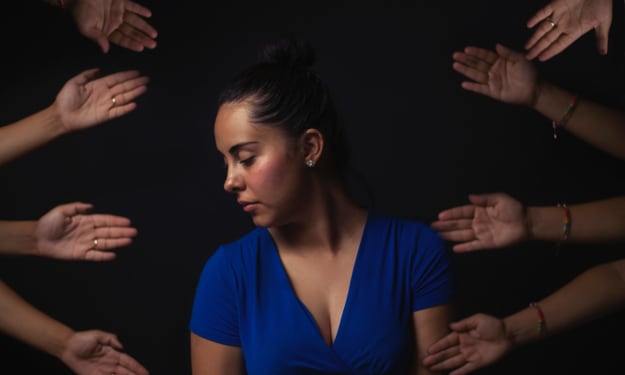International Week of the Deaf 2019—Sign Language Rights for All
Debunking Five Sign Language Myths

The week of September 23rd to 29th marks the International Week of the Deaf.
The #IWDEAF was started by the World Federation of the Deaf (WFD) which is a global organisation working to ensure equal rights for 70 million deaf and hard of hearing people around the globe.
I wanted to kick off this week by debunking several sign language myths.
Myth #1—Sign Language is Universal
There’s a reason why it’s called “American” Sign Language or “British” Sign Language; it's because there are over 300 different Sign Languages used around the world today. These sign languages are as widely different as their spoken counterparts.
There is an International Sign Language (IS) that is a pidgin language that takes signs from several sign languages and gestures to facilitate understanding between two different Deaf signers. But no Deaf person uses IS as their sole language.
Myth #2—Sign Languages are a Visual Version of their Spoken Counterpart
Sign Language actually has its own grammar, syntax, and linguistic rules that is nothing like its spoken counterpart.
For example in American Sign Language (ASL) their grammar rule is Time - Topic - Comment - Verb, so an English sentence like “I went to the store yesterday” would translate in ASL as “Yesterday, store, I go."
Sign language doesn’t just involve “signing with the hands”, it also uses facial expressions, body language, hand placement, speed of movement and other “non manual markers” to convey a whole message. For example, if you sign “I understand” but you’re shaking your head no, you are really saying “I don’t understand”.
Myth #3—Sign Language is all Iconic Signing
People believe that sign language is all iconic - meaning the signs are gestural to show an action, such as pretending to drive a steering wheel for “drive”.
The problem with “all iconic” signing is that it cannot express concepts and ideas, thus the use of arbitrary signs. This video explains the difference between the two types of signs.
Myth #4—Sign Language cannot Explain Complex Ideas
As you've learned in number three sign language isn't just gestures, and the idea is a simple language that cannot express complicated ideas such as physics, religion is simply not true.
Sign Language actually can be more expressive than the spoken word. There are Deaf people who can visually describe a movie scene by using sign language for someone who has never seen the movie; this is called visual vernacular.
Visual Vernacular is a unique, highly physical theatrical form, primarily performed by Deaf artists. It's a powerful and expressive story telling style that combines movement, iconic signs, gestures and facial expressions to capture a story, a poem, or a song.
A great example of Visual vernacular can be shown by this popular Youtuber Hii_een
Myth #5—There is One Sign for Each Spoken Word
If you take into account myths two, three, and four, you’ll understand that sign language is more contextual and conceptual in its visual expression. Not every spoken word has a specific sign for it, but just the opposite is true—having several signs to convey one spoken word is common. Which sign to use all depends on the context of the word in the sentence.
Many sign language learners forget this and get fixated on one version, which will not work in all it's uses. This is why when a student asks "What's the sign for...", fluent signers usually respond with "What's the context? Give an example of a sentence".
For example, the word "RUN", think of all its English uses:
- Run a race
- Run a bath
- A runny nose
- Run a meeting
- A run in her pantyhose
- Run errands
All these will actually use a different sign.
Final Thoughts
I hope that by debunking these sign language myths that you have a deeper understanding and appreciation for this expressive and complex language.
Sign language isn’t just “cool” or “fun to watch,” but is an intricate expression of Deaf people and cherished in Deaf culture.
So, please support Sign Language Rights for All.
About the Creator
Tracy Stine
Freelance Writer. ASL Teacher. Disability Advocate. Deafblind. Snarky.






Comments
There are no comments for this story
Be the first to respond and start the conversation.